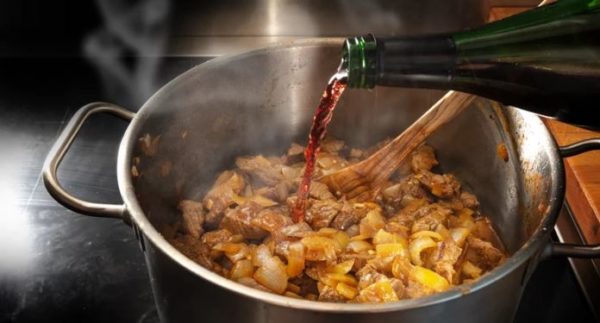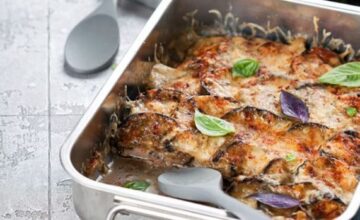
Wine, it’s what’s for dinner. And not just as a beverage with dinner, also as a key ingredient in dinner.
Compounds in wine, including alcohol, improve the flavor of cooked dishes.
Let’s take a quick look at wine’s flavor factors at work, and then dig into some top-rated recipes where wine is a critical ingredient.
The flavor factors
Alcohol
The alcohol in wine doesn’t add flavor to dishes so much as it makes other ingredients taste better. The alcohol helps release flavor molecules in foods and assists in dissolving fats, allowing ingredients to reveal their own unique flavors in ways that other liquids (like water or broth) or fats (like butter and olive oil) cannot.
When adding wine to a sauce, make sure you allow most of the alcohol to cook off; otherwise, the sauce may have a harsh, slightly boozy taste. How do you know when enough is enough? After adding the wine, cook the sauce uncovered until it reduces by about half. As the alcohol burns away, the flavor of the sauce concentrates, becoming more delicious.
Acidity
Have you ever paired a tomato sauce with a red wine like Merlot? The acid in the tomatoes can burn right through the wine, making it seem flat. That’s because Merlot, which is typically on the low end in acid, can’t compete with the acid in the tomatoes. Chianti Classico, on the other hand, is a terrific choice for tomato-based pasta dishes: the sangiovese grape (the main grape in Chianti) has enough acid to stand toe-to-toe with the acid in the tomato sauce.
Of course, all wines have acid. So when cooking with wine, use nonreactive pans and skillets (like those made from stainless steel or enameled cast iron) to avoid discoloration when the acid hits the pan.
Tannins
Tannins affect the texture of a wine. We often experience them in the mouth as a drying sensation, rather than as a specific taste. Tannins come from the grape’s skins, stems, and seeds. Thick-skinned grapes, like Cabernet Sauvignon, produce more tannic wines than thinner-skinned varietals like Pinot Noir. And red wines have more tannin than whites.
How do tannins affect our eating experience? Well, let’s take Cabernet Sauvignon, a classic pairing partner with beef dishes. In part, that’s because Cabernet Sauvignon is a highly tannic wine. The tannins in the wine become attracted to the proteins in the meat rather than the proteins in your saliva, which makes the wine seem like a softer experience in the mouth.
When you make a pan sauce with Cabernet Sauvignon, the tannins become concentrated as the sauce reduces. If the sauce does not also include enough protein and fat to neutralize the tannin, the sauce could end up tasting astringent. A vegetarian sauce, then, might work better with a less tannic red wine, like Pinot Noir, or a white wine.
Flavors and Aromas
When you’re making a dish that has one or two dominant flavors, it’s worth thinking about wines that share those basic taste characteristics. Pinot Noir, for example, particularly Pinot Noir from Burgundy, is known for having flavors and aromas of mushrooms; it might pair up nicely with a dish that features lots of fresh, sautéed mushrooms. A bright dish with a finishing splash of lemon juice might respond well to a wine with a nice, bright citrus flavor — like Sauvignon Blanc. A cream sauce with shrimp will likely match up well with a creamy, buttery Chardonnay.
The nose has a powerful memory, so as you cook dinner, take care to notice aromas in your ingredients as you prepare them. Go ahead and put the mushrooms to your nose, give the lemon a sniff, breathe in the aromas of those freshly chopped herbs. This can help you pick out aromas in wines — and give you ideas for food pairings.




